Misting is beneficial for many different types of houseplants, especially plants that are native to tropical areas.
Daily misting using an inexpensive spray bottle can make a big difference to the health of your indoor plants.
In this article I’ll tell which plants benefit from misting as well as the best way to mist your plants to avoid fungal overgrowth.
This post contains affiliate links. Please read the disclosure for more info.
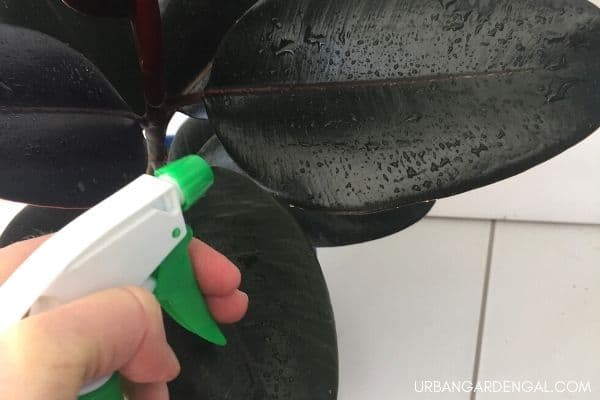
Why mist indoor plants?
Tropical plants originate from areas with high humidity like rainforests, so when they’re grown in a place with dry air they can really struggle to maintain their moisture levels.
The humidity level in rainforest areas is around 88%, while the average home has a humidity level that ranges between 30 to 40%. [1]
Most tropical plants can’t hold a lot of water in their leaves, so they dry out very quickly when humidity is low.
If you notice that the leaves on your houseplants are turning brown, yellow or curling up, they may need more humidity.
Indoor plants that love mist
Plants that benefit from being sprayed with water include air plants, philodendrons, rubber plants, ferns, anthuriums and caladiums.
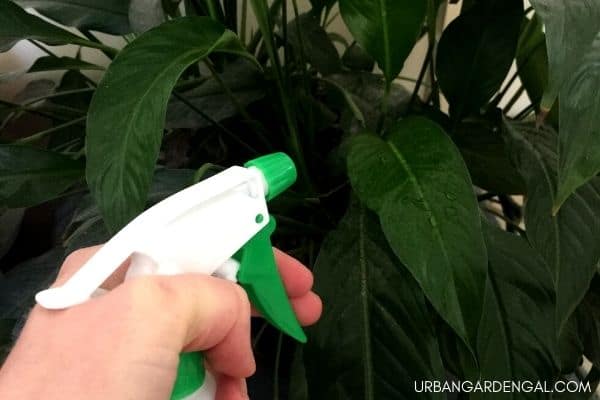
Plants to avoid misting
Misting isn’t beneficial for all plants and it can even cause some plants to rot.
Avoid misting succulents like jade plants, echeveria and aloe vera because they’re native to dry, desert areas and store lots of moisture in their leaves.
Also avoid misting plants with furry or hairy leaves like african violets because the leaves can rot if they’re kept moist.
How often to mist indoor plants
How frequently you need to mist your plants will depend on how dry the air in your home is.
If you’re running heating or cooling for most of the day or night then you’ll need to mist your plants more often.
Check your plants throughout the day and if you notice that the mist is evaporating in an hour to two then you may need to mist a few times during the day.
You can also use a hygrometer (indoor humidity monitor) to check the humidity level inside your home.
How to mist houseplants
- Fill a spray bottle
with tepid (lukewarm) water
- Use filtered or rain water that doesn’t contain chlorine, fluoride or other chemicals.
- Adjust the nozzle to the finest mist setting
- Always mist your plants in the morning so the leaves can dry out during the day.
- Mist the top and bottom of the leaves and let the water sit on the leaves. Don’t wipe the leaves down.
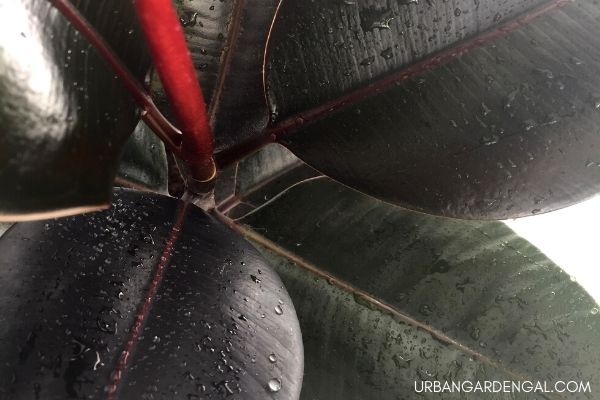
Positioning your houseplants
Placing your tropical indoor plants away from windows, heaters and air-conditioners will help to prevent them from drying out too fast.
Ensure that you have enough space between the plants so that the leaves aren’t touching and the air can circulate around the plants.
Placing your tropical plants in the bathroom can also provide them with much needed humidity.
Misting vs humidifying
Misting will help to prevent your houseplants from drying out, but if the air in your home is very dry from running heating or cooling then you may want to get a small humidifier for your plant room.
Humidifiers help to increase the humidity level in your room to recreate the humid environment that tropical plants love.
It’s best not to run the humidifier all day every day because you may get mold growing on your walls and furniture.
So there are my tips for misting houseplants.
Water spray bottles only cost about a dollar but they can make a big difference to the health of your plants.
With a regular misting schedule your indoor plants will be able to thrive, even if you don’t live in the tropics.
RELATED ARTICLES
Do you mist your indoor plants? Let me know why or why not in the comments below.
Are you on Pinterest? I have boards dedicated to Houseplant Care and Indoor Gardens that you may enjoy. You can also find me on Facebook.

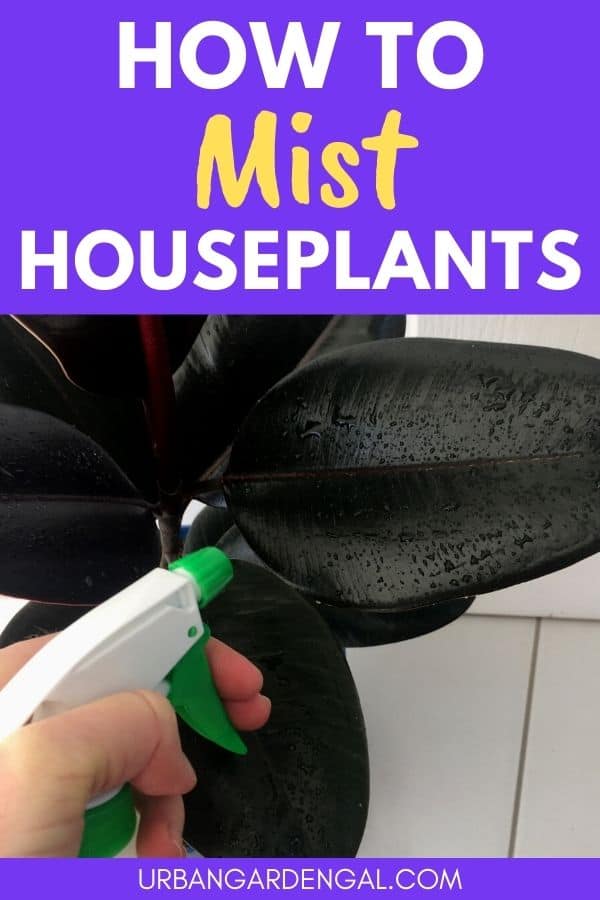
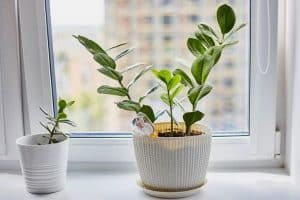
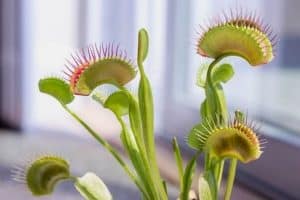
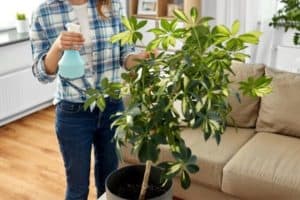

I think I should try misting my house plant too. It’s my first indoor plant and I do want it to live.
I had no idea that there was actually a science to misting houseplants! I figured it was simply something you did to all indoor plants. Shows you how much I know about indoor plants! Since I’ve been reading your blog I’ve been thinking about getting some kind of plant for my office that I can easily take care of so information like this is perfect.
This is great information. I have always had a green thumb when it comes to growing a large, extensive garden outdoors. However, for some reason, the moment that I try to bring plants indoors, it doesn’t go well. I know that part of it isn’t my fault (I have destructive cats that love to dig in the soil and rip plants out of their pots regardless of how hard I try to keep them out), but some of it definitely is! So, thank you for tips like which plants to mist and which ones to avoid.. I would totally be the person to make that mistake!